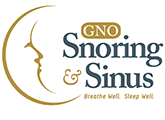Sleep apnea is more than just an inconvenience; it’s a serious health condition that can wreak havoc on your day-to-day life and your long-term well-being. Often undiagnosed or overlooked, the implications of untreated sleep apnea can be significant. This blog post explores the range of benefits that come with treating sleep apnea, from enhancing daily vitality to averting severe health complications.
Understanding the Hidden Health Crisis
The Basics of Sleep Apnea
Sleep apnea is a sleep disorder associated with breaks in breathing or instances of infrequent breaths or paused breathing during sleep. Each pause can last for several seconds to several minutes and can occur 30 times or more in an hour. While you might not remember these awakenings, you’ll surely feel their effects the next day.
Uncovering the Unseen Threat
The condition is often tied to other health concerns such as hypertension, diabetes, and heart disease. The most common form, obstructive sleep apnea (OSA), occurs when the muscles in the back of your throat relax, leading your airway to narrow or close as you breathe in. Central sleep apnea (CSA) occurs if the area of your brain that controls breathing doesn’t send the correct signals to your breathing muscles.
The Comprehensive Benefits of Treatment
Improved Daytime Functioning
Many people living with sleep apnea experience excessive daytime sleepiness, which can impair a person’s ability to concentrate and lead to decreased productivity at work or school, and even job- or traffic-related accidents. Treating sleep apnea has been linked with improvements in daytime alertness and functioning.
Managing and Losing Weight
There is a complex relationship between sleep apnea and body weight. Being overweight is a significant risk factor for sleep apnea, and conversely, the disorder can make it challenging to lose weight. Adhering to a treatment plan not only aids in weight management but has also been associated with a reduced risk of developing obesity-related complications.
Relationship Health
Bed partners of those with sleep apnea often report disturbances in their sleep due to their partner’s loud snoring and periodic breathing stoppages. This can lead to increased tension in the relationship. Sleep quality for both partners can be improved by effectively treating sleep apnea, contributing to healthier and happier relationships.
Oral and Dental Health
Oral devices have emerged as a non-invasive treatment option for those with mild to moderate obstructive sleep apnea. They work by repositioning the lower jaw and tongue to keep the airway open during sleep, which promotes better sleep and benefits oral and dental health by reducing the risk of teeth grinding and temporomandibular joint (TMJ) disorders.
Navigating the Treatment Landscape
Continuous Positive Airway Pressure (CPAP)
The CPAP machine is the most widely prescribed treatment for sleep apnea. It delivers a steady flow of air through a mask that you wear over your nose or face, promoting open airways. With recent advancements, CPAP machines are now quieter, more comfortable, and come with features like heated humidifiers to reduce common side effects like nasal dryness.
BiPAP Therapy
Bilevel positive airway pressure (BiPAP) therapy uses a machine that helps you breathe by providing air with a bit more pressure when you inhale. It then decreases the pressure to help you exhale. This approach is often prescribed for patients with co-existing lung conditions or difficulty adjusting to CPAP therapy.
Oral Appliances
Oral appliances are sometimes recommended for people with mild to moderate sleep apnea who can’t tolerate CPAP devices. Tailored by a dentist or orthodontist, these devices reposition the lower jaw or tongue to keep the airway open. They’re often simpler to use, but they’re not a one-size-fits-all solution and need to be custom-fitted for the best results.
Surgery as a Last Resort
Surgical options for sleep apnea are reserved for severe cases and when other treatments have failed. The goal of these procedures is to remove excess tissues from your throat that may be blocking the airway, such as the tonsils or adenoids, or to correct nasal septum deviations.
Lifestyle Modifications
In addition to these medical treatments, several lifestyle adjustments can help manage sleep apnea, such as:
- Weight management through diet and exercise
- Avoiding alcohol, sedatives, and sleeping pills before bedtime, as they can relax the muscles in the throat and worsen obstructive sleep apnea
- Positional therapy, which includes sleeping on your side and using special pillows or devices to maintain this position
- Consistent sleep schedules and habits, including the number of hours you sleep and the quality of your sleep environment
Recognizing the signs of sleep apnea and taking steps to treat it is paramount. Regular snoring, often punctuated by pauses in the breathing pattern, along with possible symptoms such as daytime sleepiness, irritability, and difficulty concentrating, should prompt a visit to a healthcare professional.
By treating sleep apnea, individuals can unlock a host of benefits that extend well beyond the bedroom. A good night’s sleep is not just a luxury; it’s a critical component of a healthy and productive life. Take the first step towards better sleep and better health by seeking effective treatment for sleep apnea.
Contact our office today. Your body —and those who sleep next to you— will thank you for it.

